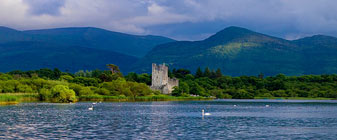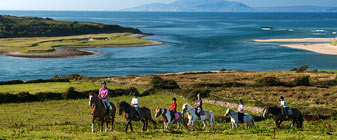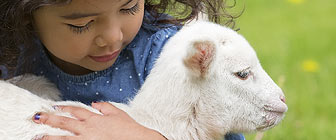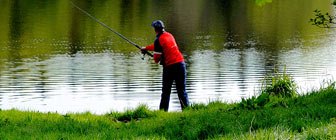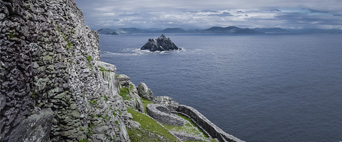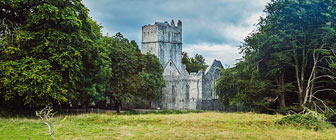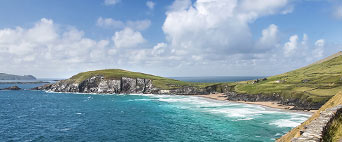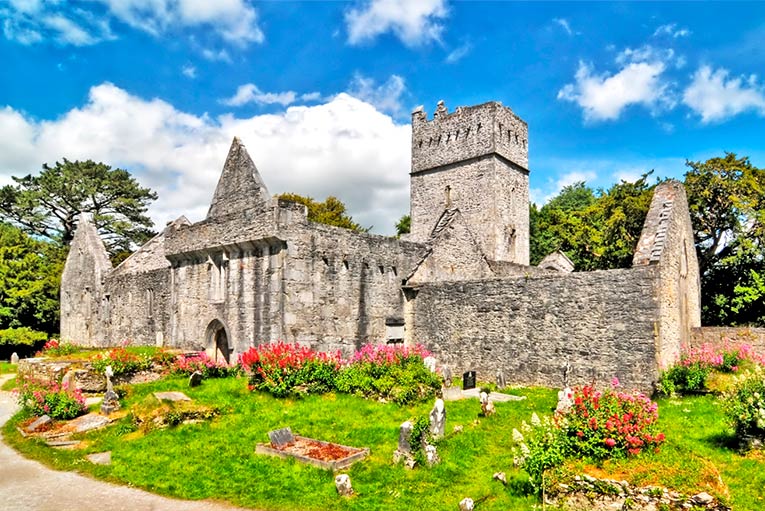
History and Culture in Killarney
Coolclogher House is only a few minutes drive from Killarney’s main historical attractions. Visit Muckross house and Gardens, in the heart of Killarney National Park and tour the old Victorian mansion to see how the landed gentry lived. Closeby, Muckross Traditional Farms offer an altogether different view of life, from the perspective of the 1930’s farmer. Go back in time to the age of O’Donoghue Mór on a visit to Ross Castle and look across at the old Monastic ruins on Innisfallen island.
Skellig Michael – Is now famous because Star Wars was filmed here. It is also a Unesco Heritage Site. The monks founded St. Fionan’s monastery dating back to 600AD it’s first reference in history on Skellig Michael. It is the largest of The Skellig Islands and one of the earliest monastic settlements in Ireland. The monks lived in beehive shaped stone huts that can still be seen today on a trip to Skellig Michael.
Click here to read more about suitable day tours while staying at Coolclogher House.
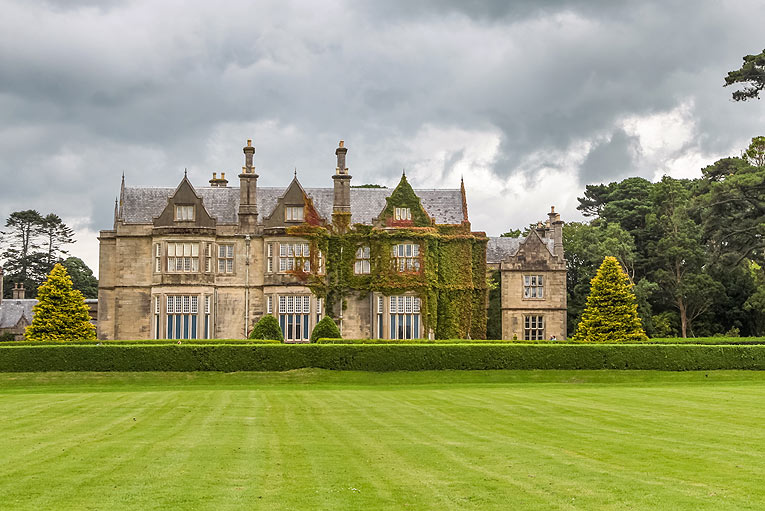
Muckross House
Muckross House and Gardens are open to the public all year. This nineteenth century Victorian mansion is set against the stunning beauty of Killarney National Park. The house stands close to the shores of Muckross Lake, one of Killarney’s three lakes, famed world wide for their splendour and beauty. As a focal point within Killarney National Park, Muckross House is the ideal base from which to explore this landscape.
The history of Muckross House
Muckross House was built for Henry Arthur Herbert and his wife, the water-colourist Mary Balfour Herbert. This was actually the fourth house that successive generations of the Herbert family had occupied at Muckross over a period of almost two hundred years. William Burn, the well-known Scottish architect, was responsible for its design. Building commenced in 1839 and was completed in 1843.
Originally it was intended that Muckross House should be a larger, more ornate, structure. The plans for a bigger servants’ wing, stable block, orangery and summer-house, are believed to have been altered at Mary’s request. Today the principal rooms are furnished in period style and portray the elegant lifestyle of the nineteenth century landowning class. In the basement, one can imagine the busy bustle of the servants as they went about their daily chores.
Queen Victoria’s Killarney visit
During the 1850s, the Herberts undertook extensive garden works in preparation for Queen Victoria’s visit in 1861. Later, the Bourn Vincent family continued this gardening tradition. They purchased the estate from Lord and Lady Ardilaun early in the twentieth century. It was at this time that the Sunken Garden, Rock Garden and the Stream Garden were developed.
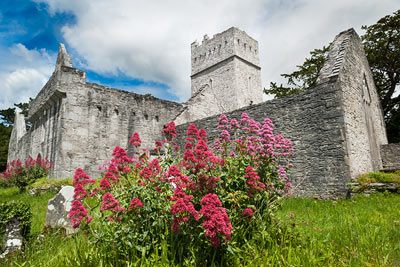
Muckross Abbey
The Franciscan friary of Irrelagh, now known as Muckross Abbey was founded for the Observatine Franciscans about 1448 by Daniel McCarthy Mor. The friars remained in occupation at Muckross at least intermittently and despite the dissolution of the monasteries until Cromwellian times.
The present well-preserved ruins include a church with a wide, square tower and fine windows, and a vaulted cloister with an arcade of arches around a square courtyard. In the middle of the courtyard grows an ancient yew tree, said traditionally to be as old as the Abbey.
The Graveyard at Muckross Abbey
Muckross Abbey was the burial place of local chieftains, and in the 17th and 18th centuries, the three Gaelic poets, Geoffrey O’Donoghue, Aodhagan O’Rathaille and Eoghan Rua O’Suilleabhain. The graveyard in the grounds surrounding the Abbey is still in use with a number of burials there each year.
Muckross Abbey is open to the public and is just a short walk from the car park on the N71, Killarney to Kenmare road.
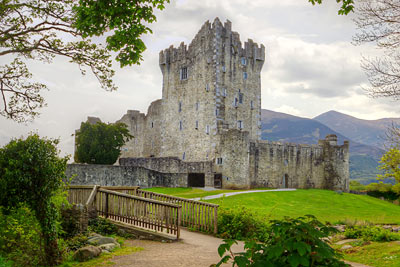
Ross Castle
Ross Castle sits on the edge of Killarney’s lower lake and was built by O’Donoghue Mór in the 15th century. The Castle came into the hands of the Brownes who became the Earls of Kenmare and owned an extensive portion of the lands that are now part of Killarney National Park .
A place of legend
Legend has it that O’Donoghue still exists in a deep slumber under the waters of Lough Leane. On the first morning of May every seven years he rises from the lake on his magnificent white horse and circles the lake. Anyone catching a glimpse of him is said to be assured of good fortune for the rest of their lives. The large rock at the entrance to the bay is known as O’Donoghue’s prison. Ross Castle was the last stronghold in Munster to hold out against Cromwell. It was eventually taken by General Ludlow in 1652.
Ross Castle is open to the public during the summer months.
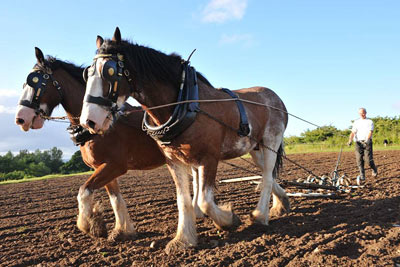
Muckross Traditional Farms
Step back into the past on Muckross Traditional Farms and visit a very different Ireland – the Ireland of the 1930s and 1940s. Then, a trip to the well was still a daily chore for the housewife and electricity had yet to be introduced to the countryside.
The horse reigned supreme – all farming activities were carried out using horsepower and traditional farm machinery. The rhythm of life followed a yearly cycle and the farmer’s activities were governed by the seasons and the weather.
Visit three separate working farms (small, medium and large), each complete with animals, poultry and machinery. The farm dwellings are furnished in traditional style, complete with dressers, settlebeds and mealbins. There is also a Labourer’s Cottage, a Carpenter’s Workshop and a Blacksmith’s Forge.
A great day out for the kids!
Our younger visitors will enjoy our small Farm Animal Petting Area, complete with its own Bouncy Castle. Parents can enjoy a sheltered picnic in our Woodland Play Area, while their youngsters have fun on the wonderful slides and swings.
A free complimentary coach service, with universal access, circles the site continuously. Visitors are welcome to board and alight from the coach as they choose, while visiting each of the farm dwellings along the way.
